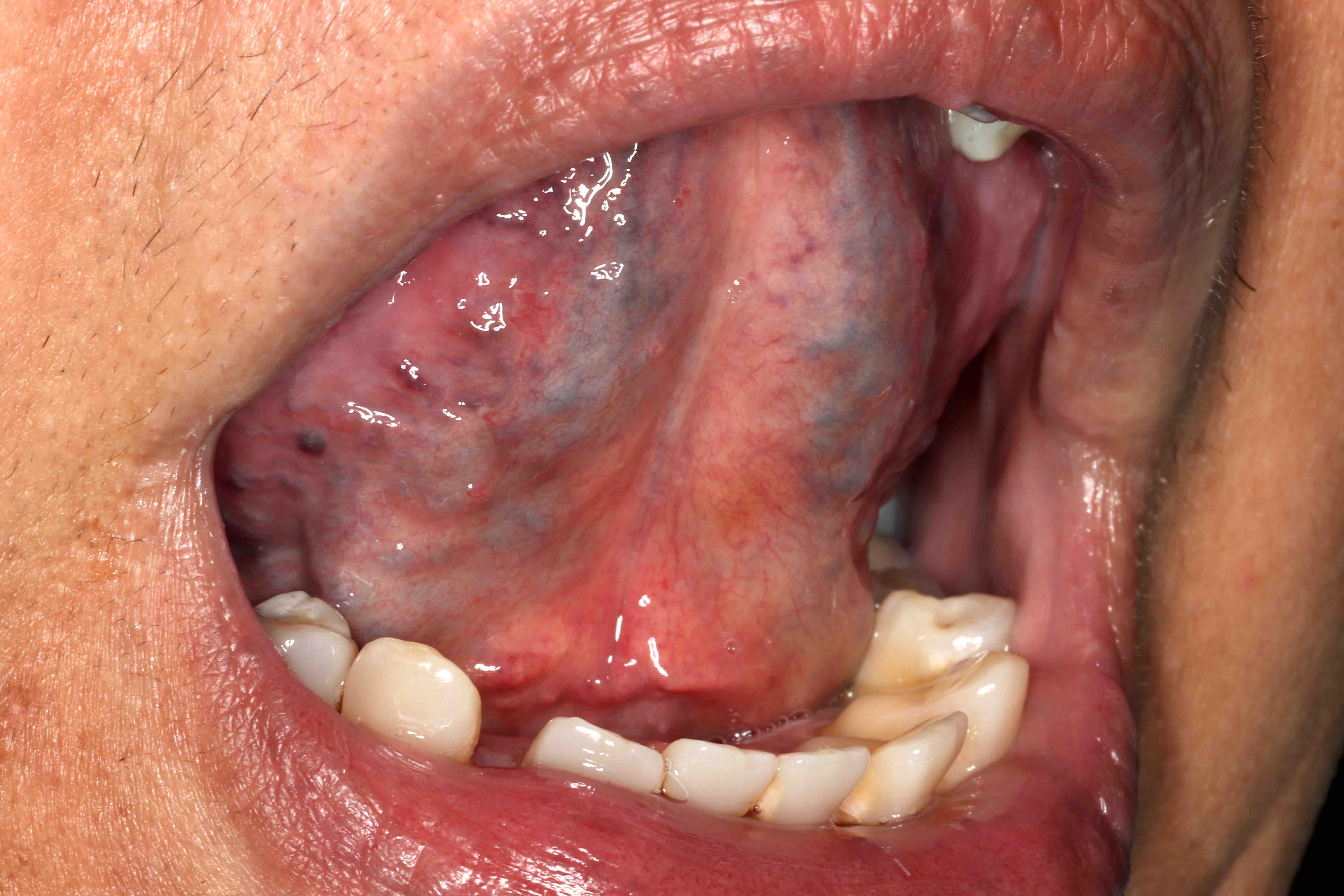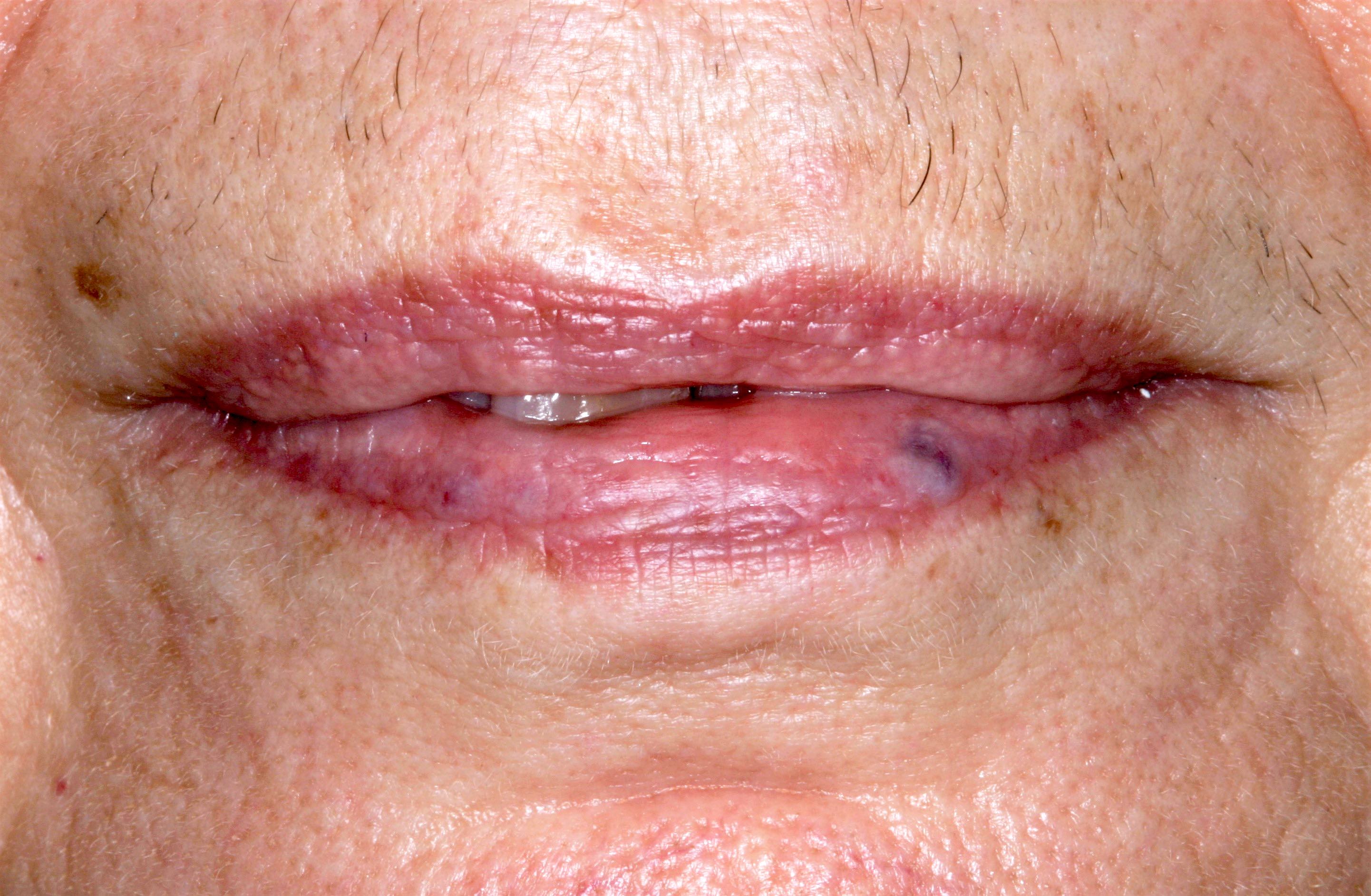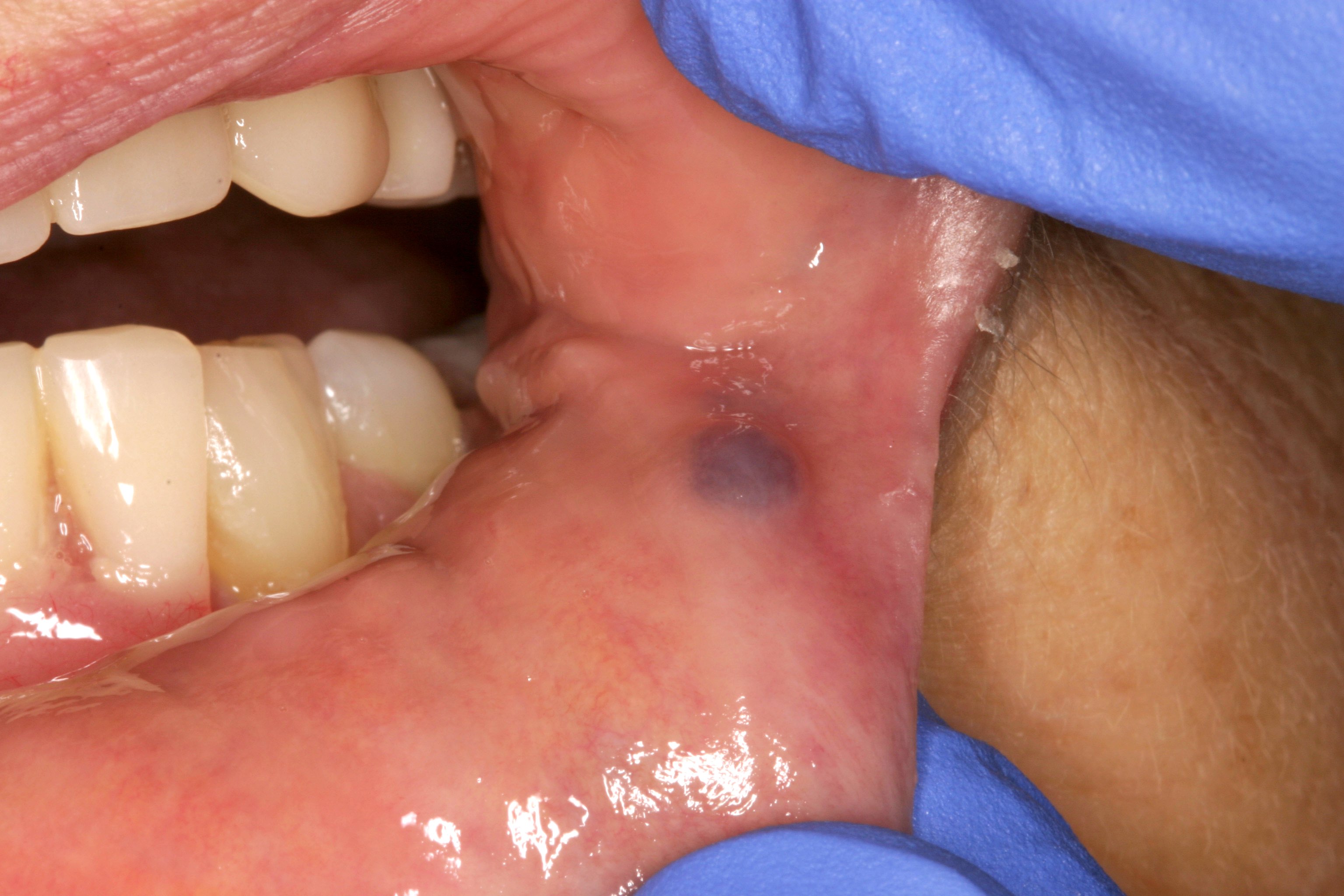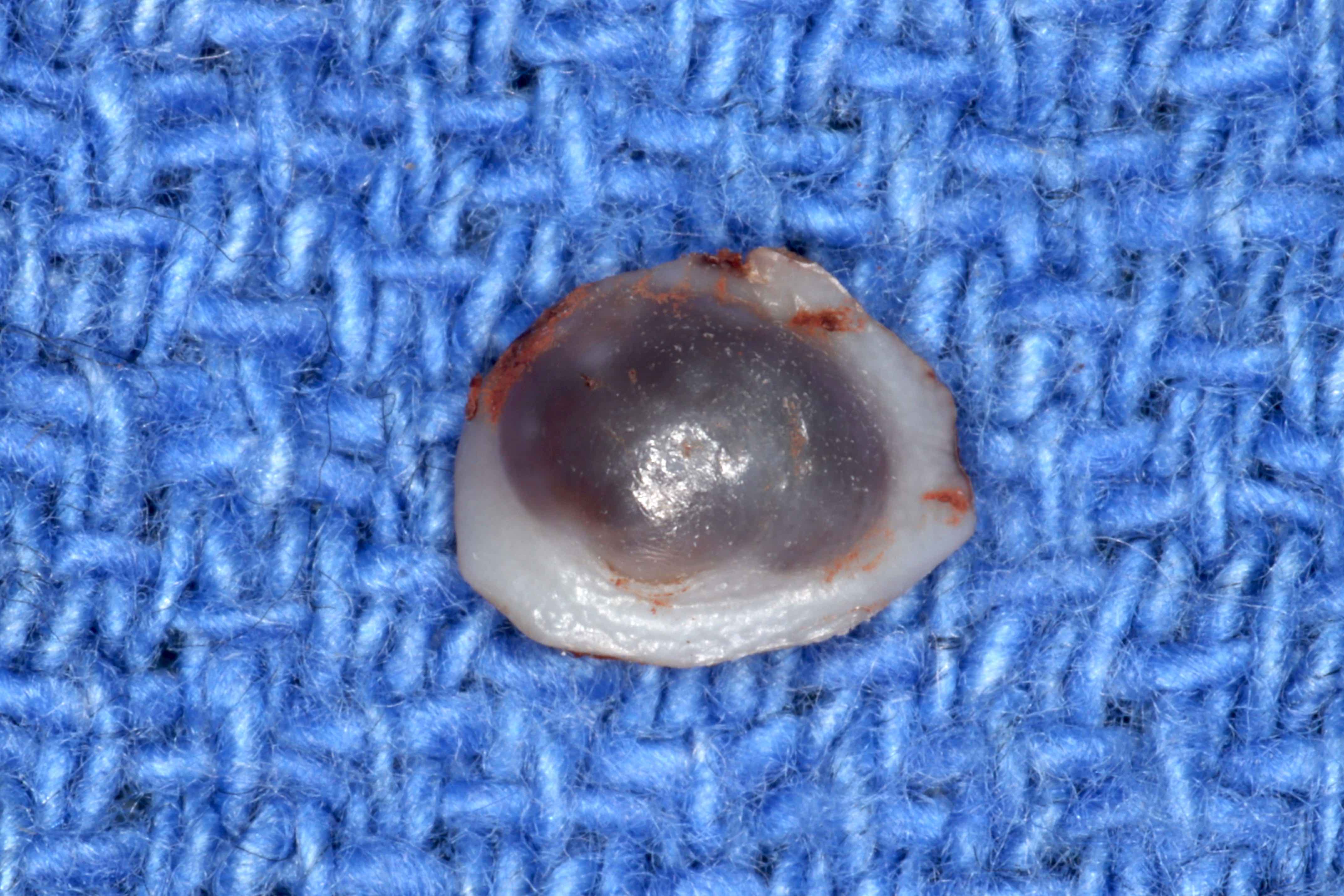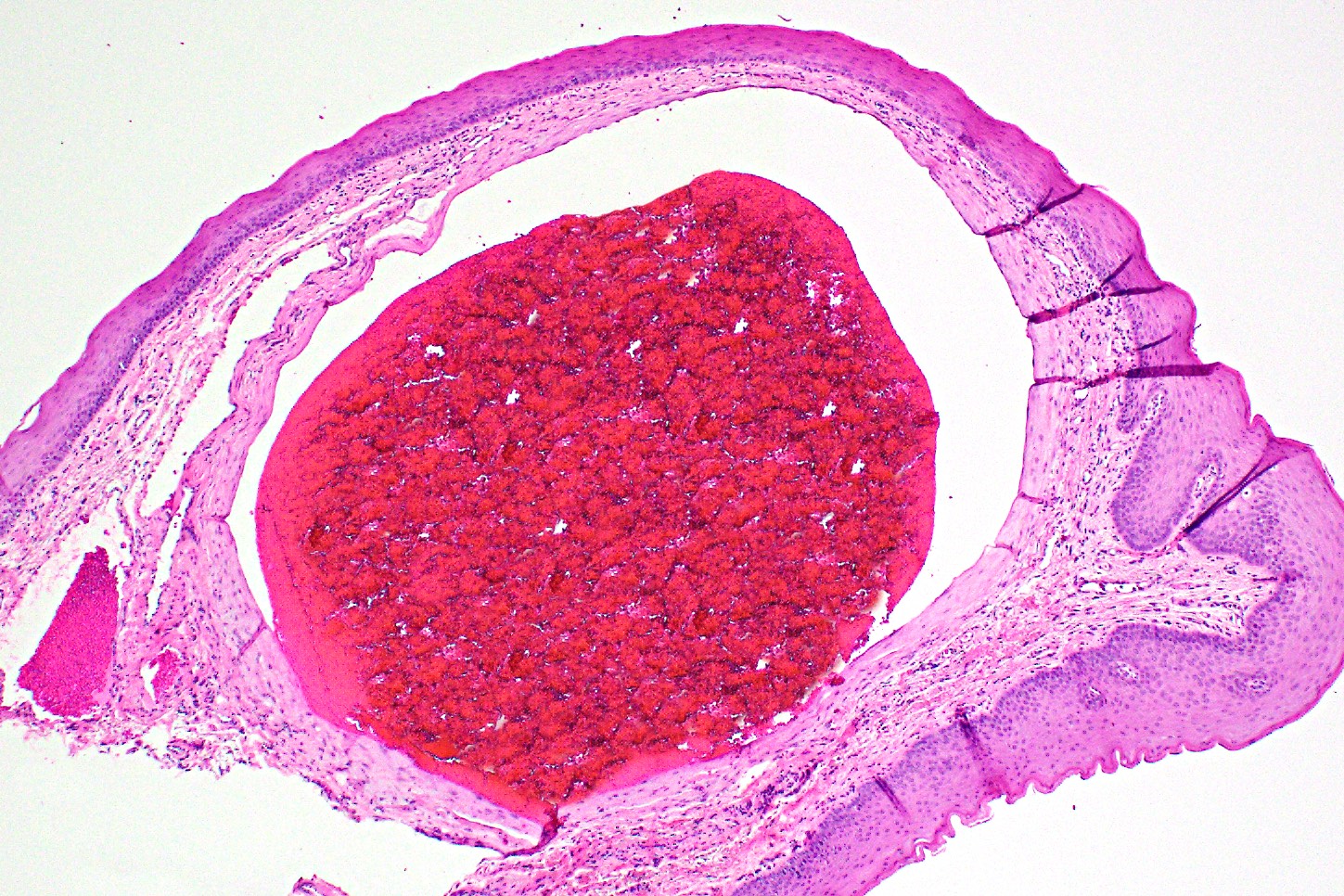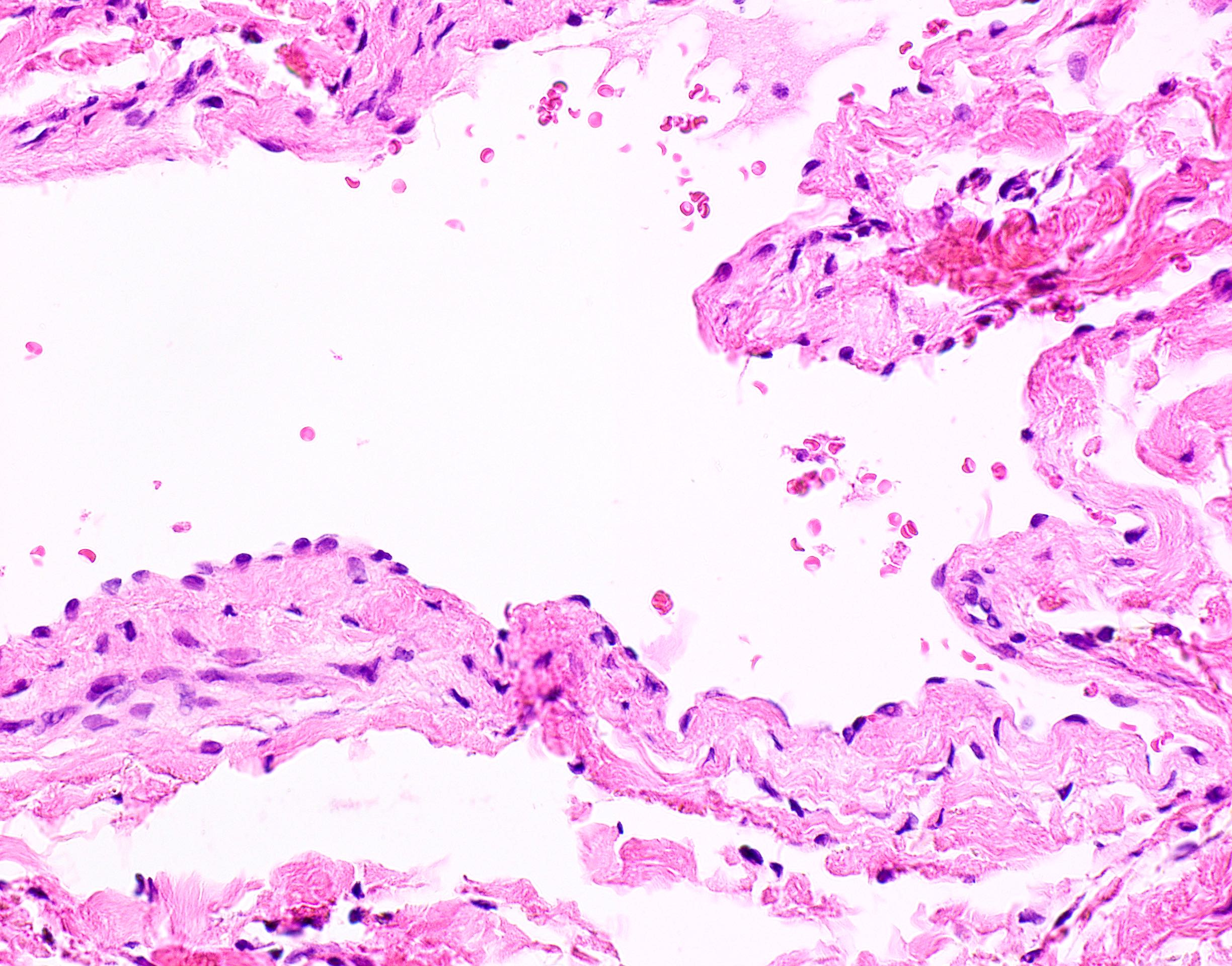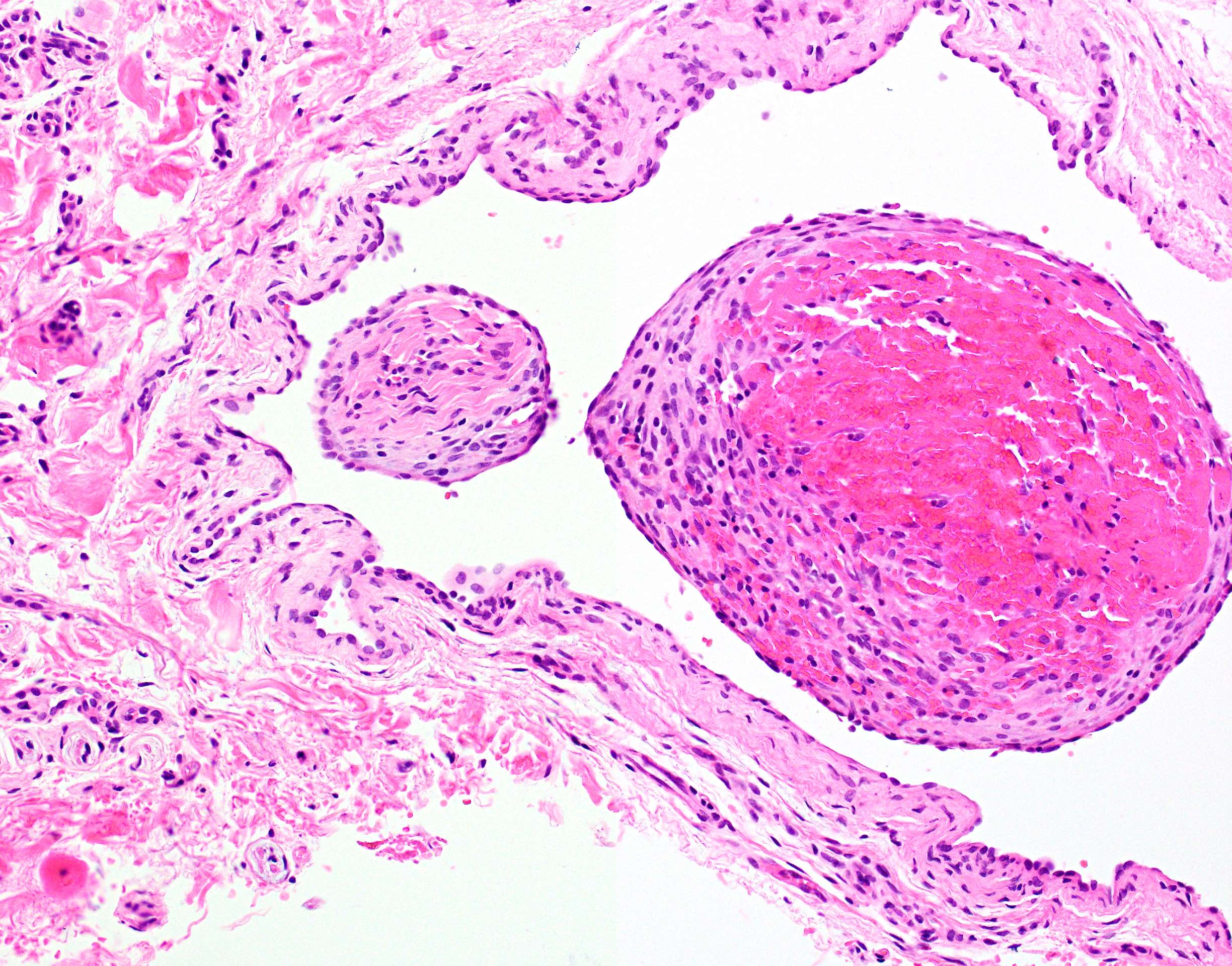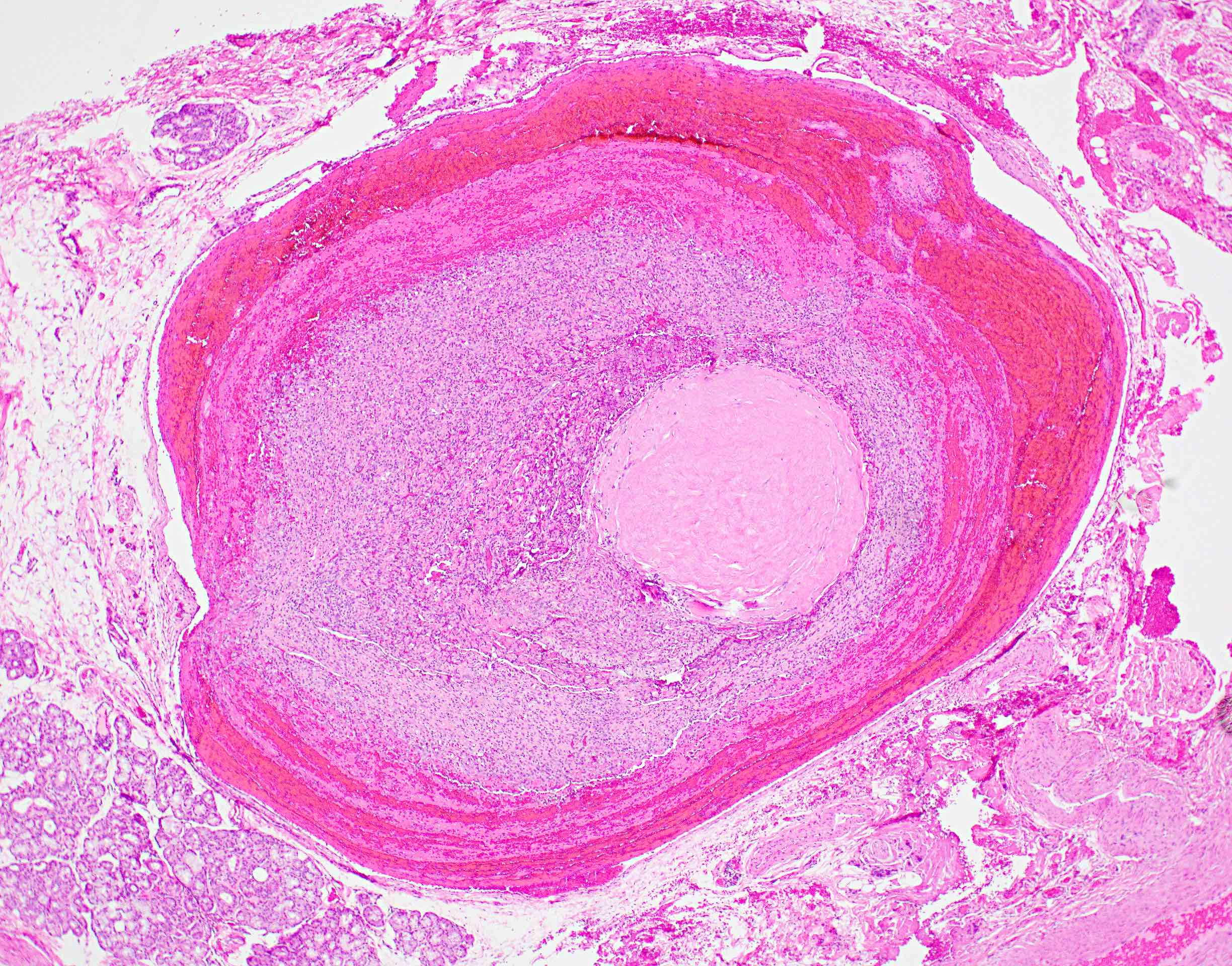Table of Contents
Definition / general | Essential features | Terminology | ICD coding | Epidemiology | Sites | Etiology | Clinical features | Diagnosis | Radiology description | Prognostic factors | Case reports | Treatment | Clinical images | Gross description | Gross images | Microscopic (histologic) description | Microscopic (histologic) images | Negative stains | Sample pathology report | Differential diagnosis | Additional references | Board review style question #1 | Board review style answer #1 | Board review style question #2 | Board review style answer #2Cite this page: Smith MH. Varix / varicosities / varices. PathologyOutlines.com website. https://www.pathologyoutlines.com/topic/oralcavityvarix.html. Accessed April 20th, 2024.
Definition / general
- Oral varicosities are tortuous and aberrantly dilated venous structures that most often present on the lips and ventral tongue of older individuals
- They represent a developmental anomaly of unknown etiology with minimal clinical implications
Essential features
- Abnormally dilated venous structures
- The most common oral mucosal lesion in older adults (J Dent Res Dent Clin Dent Prospects 2019;13:24)
- Most often found under the tongue and around the lips / labial mucosa
Terminology
- Varicosity / varicosities
- Varix
- Varices
- Caviar tongue
- Phlebectasia linguae
Epidemiology
- Older individuals (67% of patients are > 60 years) (Clin Dermatol 2016;34:458)
Sites
- Sublingual varices are most common
- May also be found on skin of lip, labial mucosa or buccal mucosa
Etiology
- Unknown etiology
- Loosely associated risk factors include smoking, cardiovascular disease (e.g. hypertension), female gender, denture wearing, chronic liver disease and old age (Clin Dermatol 2016;34:458, Folia Morphol (Warsz) 2019;78:325, Medicine (Baltimore) 2019;98:e16987, Saudi Med J 2015;36:310, BMC Oral Health 2015;15:78)
Clinical features
- Presents as a chain of compressible blue-purple nodules on either side of the lingual frenum or as a single elevated or flat submucosal nodule in other locations
- May be firm when thrombosed
- Ventral tongue is the most common site, although also found on labial mucosa, skin of lip, buccal mucosa or other rare oral sites
- Painless and often inconsequential (Gerodontology 2015;32:82)
Diagnosis
- Diagnosis often is made on clinical presentation, especially when in the sublingual location; biopsy often is not required
- Diascopy may prove useful in differential diagnosis, as varicosities demonstrate blanching (Gerodontology 2015;32:82)
- A single varicosity may be diagnosed upon histologic examination when the presentation is not clinically diagnostic
Radiology description
- Occasionally, oral varicosities may demonstrate small opacifications on radiographic imaging due to phlebolith formation within a thrombus (Gerodontology 2015;32:82)
Prognostic factors
- Varicosities are of little clinical consequence
- Patients have a good prognosis, although rare cases may be associated with bleeding (Medicine (Baltimore) 2019;98:e16987)
Case reports
- 42 year old woman with bleeding varicosity at base of tongue in association with liver cirrhosis (Medicine (Baltimore) 2019;98:e16987)
- 60 year old white woman with oral varicosity treated with sclerotherapy (Med Oral Patol Oral Cir Bucal 2006;11:E44)
- 62 year old woman with lingual varicosities visualized via dermoscopy / mucoscopy (Dermatol Pract Concept 2018;8:54)
Treatment
- Varicosities generally are not treated unless thrombosed or displeasing to the patient in form or function
- In such cases, conservative surgical excision or sclerotherapy is sufficient (Med Oral Patol Oral Cir Bucal 2018;23:e180)
- Safe and effective treatment has been performed with diode and Nd:YAG lasers (J Contemp Dent Pract 2015;16:723)
Clinical images
Gross description
- Tan surface with raised or flat blue-purple-black ovoid structure, which may be firm or depressible
- Cut surface shows dilated or collapsed vascular space that may demonstrate luminal accumulation of brown erythrocytes
Microscopic (histologic) description
- 1 - 3 tortuous, enlarged venous structures lined by a thin layer of endothelium (Gerodontology 2015;32:82)
- Thrombosis or organizing thrombosis is often present, which is depicted by concentric layers of erythrocytes and platelets, referred to as lines of Zahn
- Aggregates of granulation tissue may also be present during formation
- Concentric rings of eosinophilic calcifications may be present within the lumen
Microscopic (histologic) images
Negative stains
Sample pathology report
- Lower lip, excision:
- Vascular anomaly consistent with varicosity
Differential diagnosis
- Sublingual varicosities are clinically diagnostic and do not require biopsy
- Clinical differential diagnosis for a single, blue oral varix may include the following:
- Hemangioma:
- An abnormal collection of more than 3 dilated vessels, seen on light microscopy
- Congenital
- Often GLUT1 positive (Oral Dis 2007;13:51)
- Vascular leiomyoma (angioleiomyoma):
- Histopathologic examination reveals a well defined proliferation of smooth muscle emanating from vascular walls
- Positive for alpha smooth muscle actin
- Salivary tumors / reactive processes, differentiated upon biopsy:
- Amalgam tattoo:
- May demonstrate opacification on radiograph
- Flat, blue-black pigmentation
- Histopathologic examination reveals foreign particles within connective tissue
- Melanocytic nevus (especially blue nevus):
- Histopathologic examination reveals focal collection of melanocytes
- Melanoma:
- Often irregular borders
- Histopathologic examination reveals abnormal increase in melanocytes
- Most common on the maxillary gingiva and hard palate
- Focal melanosis / melanocytic macule:
- Flat, never raised
- Focal accumulation of melanin without increase in melanocytes, seen on light microscopy
- Hemangioma:
Additional references
Board review style question #1
Board review style answer #1
Board review style question #2
Board review style answer #2



